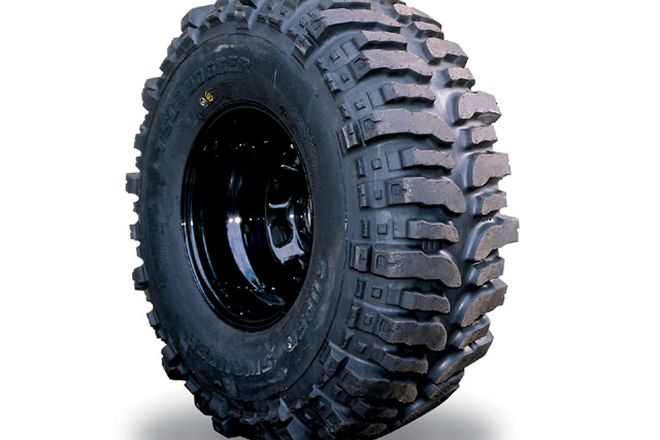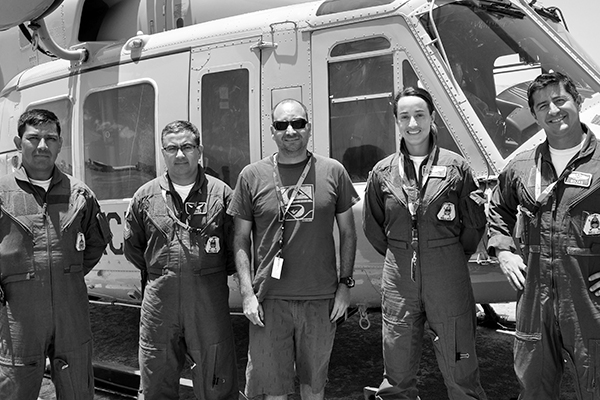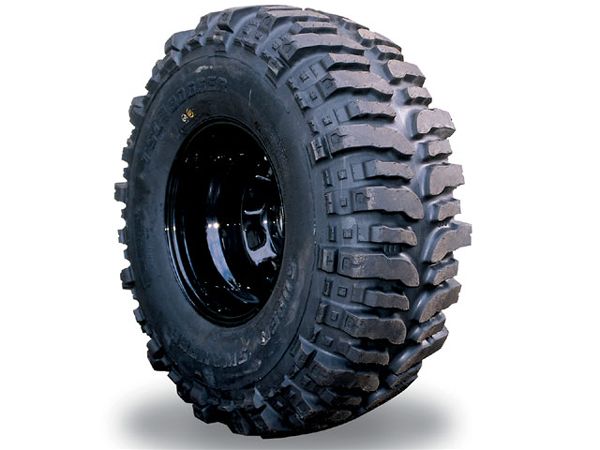
 Craig Perronne
Brand Manager, Dirt Sports & Off Road
Craig Perronne
Brand Manager, Dirt Sports & Off Road

Boggers have been around awhile but recently Interco, the tire's manufacturer, introduced a new size, a 37x13, that intrigued us. With sidewall dimensions of 37x13.00, the new size seemed a perfect step up from a 35-inch tire without going all the way to a 38-inch tire. Whipping out the tape measure showed us that the Boggers were 35.4 inches tall off of the vehicle. While this seemed a little short for a 37-inch tire, it did offer us a bit more ground clearance than the 35-inch tires we were running.
The new 37-inch size is available for 15-, 16-, and 17-inch wheels. We got our hands on a set of 37x13.00R16s and mounted them on a set of 16x10 Rock Crawler wheels from 4Wheel Parts Wholesalers.
After 4Wheel Parts mounted and balanced our tires, we hit the trails to see how they would perform. Boggers are the most aggressive mud tires you can buy. Their large lugs with lots of space in between them easily allow the Boggers to shed mud. While this allows the Boggers to keep on clawing their way through the mud, it also gives them the tendency to dig downward. This can either be good or bad, depending upon your driving style and the type of mud you are in.
Usually the better the tire does in mud the worse it does on the street, and this definitely holds true for the Bogger. Loud is the operative word for the Bogger, as plenty of noise emits from its very aggressive tread pattern on the pavement. The Bogger's large lugs and voids also emit a decent amount of vibration when cruising on pavement at freeway speeds. Because of these factors, if you plan to spend more time on the highway than the trail, the Bogger would not be a wise choice.
While the Boggers are not well suited for street use, they do shine on rocky trails. Their big, open lugs allow them to grab and hold onto rocks and climb over them. Another aid in the rocks is that the 4-ply nylon sidewall of the Boggers is plenty tough. The only downside is that on smooth rocks the Boggers do not grip particularly well. This was evident in the granite bowls of the Rubicon and on the slickrock of Moab, where the Boggers had a hard time finding traction compared to a less aggressive tire with more tread actually on the rock. However, if there is a ledge or edge that the Bogger can grab onto with its big lugs, it will.
In the sand, the Bogger's aggressive tread pattern allows it to act much like a paddle tire. And just like paddle tires, you will need a lot of horsepower to run Boggers in the sand effectively. Without horsepower, the Boggers dig holes rather than float on the surface. However, if you do have enough power, the Boggers will propel you to the top of whatever dune you are climbing.
The Bogger is the complete opposite of an all-terrain tire. It makes no claims of working in a variety of conditions. Rather it works very well in a few types of terrain. If you spend a lot of time in the mud, on trails with broken, jagged rocks, or in sand with a high-horsepower rig, then the Bogger might be a good choice for you.
RATING Mud CCCCC Rocks CCCC Sand CCC Street C Five thumbs = best, one = worst